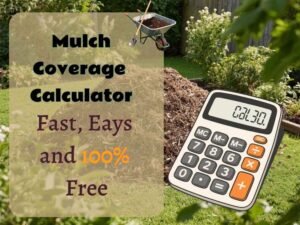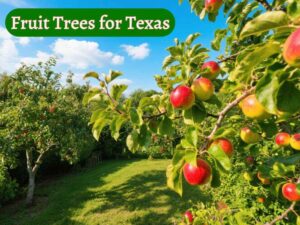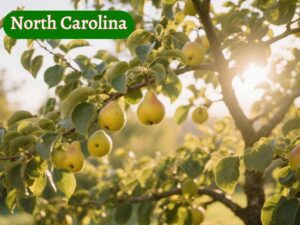When talking about biennials, we often hear that they complete their growth cycle in two years. Yes, it is true genetically! But actually unexpected environmental conditions decide when biennials complete their lifecycle. However, we can say that the growth stages of biennials remain two (Vegetative and reproductive), whether it takes two years or less. So, let’s understand what is the facts behind the biennial lifecycle.
Did you know? The classification of plants based on their growth cycle (Annuals, Biennials, and Perennials) is commonly applied to flowering plants. However, some non-flowering may be called as a perennial.
What Does Biennials Mean?
Biennials complete their growth cycle from seed growth to flowering. The concept of biennials often confuses many gardeners. Let me clarify that biennial plants make roots and leaves during the first year and produce flowers and seeds when the second year starts.
For example, carrots, turnips, and radishes are vegetable biennials that complete their life cycles in two growing seasons. First-year biennials store energy in their roots, which we harvest as vegetables (called root vegetables) or herbs. To harvest new seeds from flowers, we need to leave the roots of vegetables and leaves of herbs until the second year.
Flower biennials (such as Foxglove and Canterbury bells) store most of their energy in the crown (the thick part near the ground), basal leaves, and roots. We primarily use biennial flowers for aesthetic purposes and seed collection.
Discover Trending Post
- How Many Bags of Mulch in a Yard? Free Mulch Calcultor
- Best Fruit Trees for Georgia: 3 Easy Choices for Beginners
- Parts of a Flower and Their Functions: Labeled Diagrams
- 3 Best Fruit Trees to Grow in Florida’s Heat and Humidity
- Top 3 Fruit Trees That Grow Best in Texas Yards
- Do pears grow well in North Carolina? What Gardeners Must Know
When Do Biennials Complete Their Life Cycle?

The simple answer to this question is that biennials complete their lifecycle in the second year when they produce flowers and seeds after proper vernalization.
However, biennials don’t have to take exactly 2 years to complete both stages (vegetative and reproductive). According to my research and experience, the maximum lifecycle duration is 24 months genetically, but biennials often complete in 12, 15, or even 18 months due to environmental conditions and harvesting purposes.
If we harvest biennial plants in their vegetative stage, they are behaviorally called annual, although they are biennials genetically.
Did you know? The statement explained above is also supported by a study from direct science, which concluded through a stochastic model that delaying flowering in a changing environment can benefit biennial plants. This not only increases the population but also reduces the risk of extinction. (Reference: Direct Science)
As you might have guessed, the lifecycle duration of biennials may vary based on environmental variations (heat or drought stress, improper vernalization) and harvesting purposes but it’s worth reminding beginners again that biennials have two growth stages, that occur within two years.
We say biennial to easily recognize them, but in reality, many factors, including region climate, plant variety, cold intensity (vernalization), and sowing time, decide when biennial plants complete their lifecycle.
Generally, we can say;
- Maximum duration range: 2 Years (24 Months)
- Duration range based on environmental variations: 12, 15, or 18 months
Factors that Affect the Timing of Biennial Life Cycle Completion
Climate Regional Climate: If winter is harsh, like in colder areas (Alaska), flowering growth may be shown early. On the other hand, the flowering phase may be delayed in tropical regions, such as Texas and Florida.
Plant Variety: Some biennial varieties, such as certain hybrid varieties of carrot and beets may not need intense winter exposure as traditional biennials, while some, particularly onion require strong vernalization.
Planting Time: Late summer to early fall is the best time for colder areas, such as Canada, the U.S., and Europe, but at this same time, late summer is the wrong time to plant biennials in warmer areas, such as California, Florida, and Texas.
Environmental Stress: Drought, poor soil, and transplant shock can delay or accelerate flowering growth. Biennials just need to get a signal (like a cold period), and then start flowering.
Understanding the Whole Lifecycle of Biennials

By the way, the biennial lifecycle may vary, but its growth stages remain the same, which demands different environments and conditions for each. For example, when we plant a cool season biennial in late summer to early fall, depending on the regional climate, they complete two growth stages, preferring different environmental requirements;
- Vegetative Growth (Roots, leaves and stem)
- Reproductive Phase (After cold, flowering+seeds)
First Stage: Vegetative Growth
Vegetative growth means developing only leaves, roots, and stems and requires adequate photoperiod for the proper photosynthesis process.
Growing Requirements for Vegetative Growth: Cool Season & Warm Season Biennials
Cool season biennials (Carrot, Beets, Cabbage, Foxglove, etc)
- Planting time: late summer to early fall
- Temperature: Vegetative growth performs well in mild to cool weather (10C to 21C) with a little cooler nights.
- Sunlight: Partial to full sun
- Soil Type: Moist, well drainage with nitrogen fertilizer in the growing season.
Still, the above growing requirements for vegetative growth are explained generally, any plant growth is highly dependent on the plant variety and regional climate. If any biennial plant gets ideal conditions according to its variety of preferences and regional climate, vegetative growth of biennials may be completed from 6 months to 12 months.
Second Stage: Reproduction
Reproduction of biennials includes developing flowers to produce seeds for growing new children’s plants. In this phase, only flowers bloom after proper vegetative growth and adequate vernalization according to the plant’s preference.
Did you know? We can control biennial weeds, such as Musk Thistle and Bull Thistle reproduction by harvesting them.
Growing Requirements for Reproduction: Cool Season & Warm Season Biennials
Cool-season Biennials
- Vernalization Need: Cold exposure for 30 to 60 days of chilling (typically 4C to 10C).
- Flowering time: After Winter chill, Spring to Summer
- Photoperiod: Spring warmth and longer daylight with stable temperature.
- Soil type: Moist but not soggy soil with phosphorus and potassium fertilizing in the growing season.
Here, proper vernalization with full vegetative growth matters for the flowering phase. If vernalization is done in an ideal way, the reproduction phase of the second year may take 6 to 9 months.
Behavior of Biennials
If Biennials are Harvested for food purposes, they behave like annuals, stopping the lifecycle at 12 months or less. Because we harvest their energy, which is the fundamental base of flowering production. And that’s called warm-season biennials, as they are harvested in warmer spring days.
However, if any plant lives for more than 1 year and produces seeds from flowers in warmer areas, it will be called a short-lived perennial instead warm-season biennial. Anyway, true biennials (we let them make flowers after cold exposure) counted in cool-season biennials.
So, we can say there are no true warm-season biennials!
How to Know When Your Biennial Plant Will Complete Lifecycle?
The answer to When biennials complete their life cycle depends on different factors, especially where you live and which variety you are using. Here are 4 practical techniques to determine when your biennial lifecycle will complete:
1-Check seed packet information
Many seed packets are clearly mentioned.
- How many cold weeks does the biennial plant need?
- How long can I expect flowering?
- Does it need overwintering or not?
This small packet helps a lot for future planning!
2-Check the Average Winter in your area
Are your winters mild or harsh? If it stays below 5C for 6 to 10 weeks, the vernalization of biennials will be complete, while flowering growth may be delayed or stopped in mild winter.
3-Understand the details of vernalization
Some biennials require the exact duration of cold exposure, such as
Foxglove needs 8 to 10 weeks of chilling at around 5C to flower. If this condition is completed, foxglove may flower in just one year, whether it is technically a biennial.
4-Research on Variety Behavior
Not every variety behaves the same:
- Some biennials (Wallflowers) will flower in mild winters.
- While foxglove or Carrots require intense wintering.
- You can learn about specific varieties from gardening forums, nursery guides, or botanical sources.
Last Answer as a Tip: When Biennials Complete Their Lifecycle
If your biennial has made it through its first winter and spring has arrived, chances are it will enter the flowering stage. If it is still vegetative, the lifecycle may take another year.

